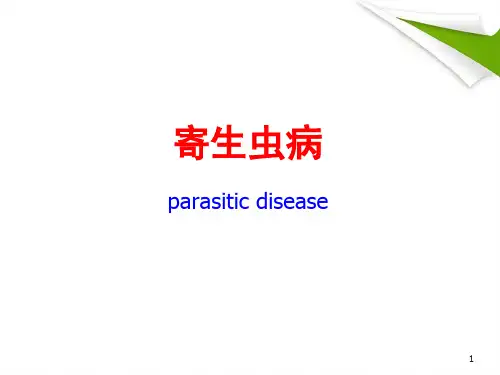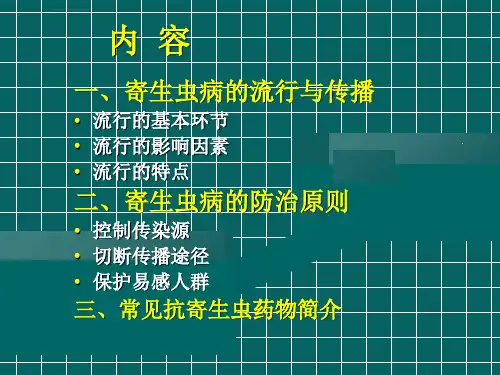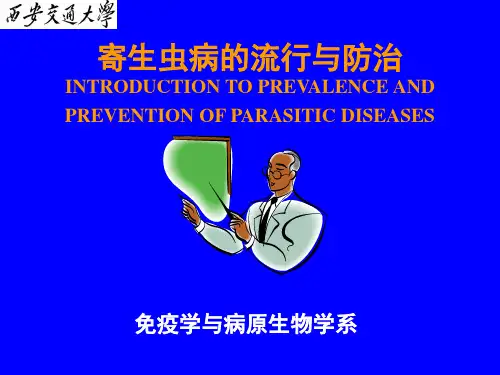第四章
寄生虫病的诊断
第一节 临床诊断
一、流行病学分析 了解有关的流行因素、中间宿主、储藏宿主、
媒介昆虫;当地的气候、水土、植被情况等等。
二、临床症状观察 一般症状:消廋、贫血、下痢、水肿 特征性症状:高热、贫血、黄疸、血尿(巴贝
斯虫病)
三、病理学诊断 病理解剖:找出特征性病变 病理组织学检查:发现典型病变和各发
Test tube flotation
Sedimentation (Trematode eggs)
Identification of eggs
DIAGNOSIS OF HAEMOPARASITES
DIAGNOSIS OF ECTOPARASITES
Direct examination In the laboratory a few ectoparasites can be picked up with a needle and transferred to saline and examined under a microscope.
blood samples and blood smears, swabs, faecal samples etc.
post-mortem examination.
FAECAL EXAMINATION
Identification of helminth eggs in faeces is an easy and cheap way to diagnose many helminth infections and to get an impression of the infection level at individual as well as population level.










